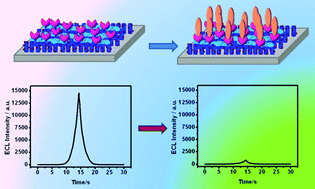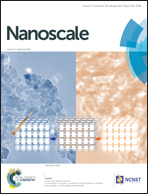A novel electrochemiluminescent immunosensor based on CdS-coated ZnO nanorod arrays for HepG2 cell detection†
Abstract
In this work, the highly oriented CdS-coated-ZnO nanorod arrays have been fabricated. The CdS-coated-ZnO nanorod arrays show high electrochemiluminescence intensity, fast response and good stability. All of the desirable properties spur the development of an ECL immunosensor for the detection of the liver cancer cell line (HepG2 cells). Two successive modification steps of 3-aminopropyltriethoxysilane and gold nanoparticles onto the CdS-coated-ZnO nanorod arrays not only offer the substrates for conjugation of antibody, but also effectively enhance the ECL signal, resulting in production of the high performance ECL immunosensor. The ECL immunosensor exhibits a sensitive response to HepG2 cells in a linear range of 300–10 000 cells mL−1 with a detection limit of 256 cells mL−1. The proposed sensor characteristics of high specificity, good reproducibility and remarkable stability will provide a sensitive, selective, and convenient approach for the clinical detection of cancer cells.


 Please wait while we load your content...
Please wait while we load your content...